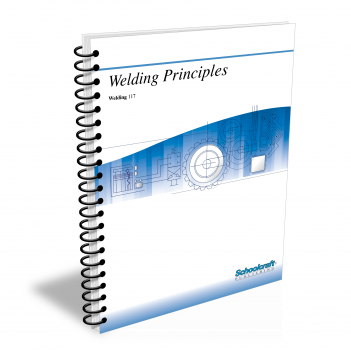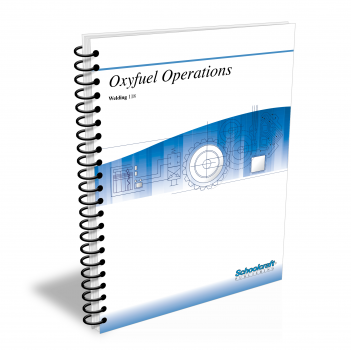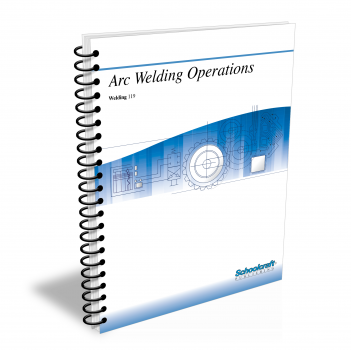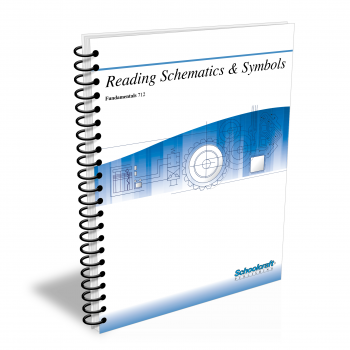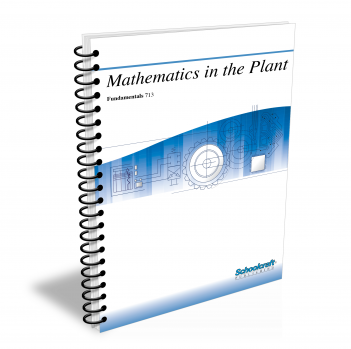Blueprint Reading for Welders

Course Number: 116
The Blueprint Reading for Welders textbook covers basic shop math and measurement skills. Explains how to read, use, and make blueprints. Discusses various welds, weld joints, and weld symbols. Explains advanced shop math and measurement skills.
Does your curriculum require additional topics not included in this textbook? Build a customized version of the Blueprint Reading for Welders textbook below.
Recommended Contact Hours – 9
Preview a Chapter
Available Supporting Material
- Table of Contents
- Exam Copies
- Suggested Titles
Table of Contents
Chapter 1: Shop Math and Measurement
Topics: Fractions; Common fractions; Reducing common fractions; Improper fractions; Mixed numbers; Calculations involving common fractions; Shortcuts for working with common fractions; Decimal fractions; Calculations involving decimal fractions; Converting common fractions to decimal fractions; Converting decimal fractions to common fractions; Standard rules and tape measures; Reading a rule or tape measure; Using a calculator
Learning Objectives:
- Define and identify common fractions and decimal fractions.
- Define the term equivalent fraction.
- Perform calculations using common fractions and decimal fractions.
- Convert between common fractions and decimal fractions.
- Read and perform measurements using a standard rule or tape measure.
- Explain the use of calculators in welding
Chapter 2: Introduction to Blueprints
Topics: Purpose of blueprints; Types of blueprints; Making blueprints; Parts of a blueprint; Body; Title block; Bill of material; Revision block; Zoning; Security; Care and handling of blueprints
Learning Objectives:
- Explain the importance of information on blueprints.
- Explain the differences between assembly drawings and detail drawings.
- Describe methods used to create and reproduce blueprints.
- Define and describe parts of a blueprint.
- Identify elements located within the title block of a detail drawing.
- List methods of care and security of blueprints.
Chapter 3: Lines and Views on Blueprints
Topics: Lines used on a blueprint; Views on a blueprint; Perspective; Orthographic projections; Oblique projections; Isometric projections; Other views; Selecting views; Sketching
Learning Objectives:
- Identify the standard lines used on blueprints.
- Explain the meaning and applications of standard lines on blueprints.
- Identify common views used on a blueprint.
- Name the advantages and disadvantages of various projection types.
- Explain the concept of visualization.
Chapter 4: Welds and Weld Joints
Topics: Basic weld joints; Butt joint; Lap joint; Tee joint; Corner joint; Edge joint; Weld types; Groove welds; Fillet welds; Plug and slot welds; Spot and seam welds; Stud welds; Surface welds; Backing welds; Welding positions and locations
Learning Objectives:
- Identify and describe the five basic weld joints.
- Define the following terms: bead, stringer bead, weave bead, base metal, filler metal, root pass, hot pass, fill pass, cap, hardfacing.
- Identify and describe the basic weld types.
- Name the basic welding positions and give advantages of the flat position.
Chapter 5: Welding Symbols
Topics: Structure of welding symbols; Reference line; Arrow; Weld symbol; Dimensions; Special symbols; Tail; Reading welding symbols
Learning Objectives:
- Identify which side of a structure a weld is to be made from.
- Identify the kind of chamfer to be cut on a joint to be welded, and which part is to be chamfered.
- State the required dimensions of a weld.
- Identify the contour required on a finished weld.
- State how a weld contour is to be finished.
- Differentiate between welds that are to be made at the site of final assembly and welds that are to be made before the parts are shipped to the site.
Chapter 6: Advanced Shop Math and Measurement
Topics: Squares and square roots; Angles; Triangles; Circles; Linear measurement; Calipers; Slide calipers; Vernier calipers; Micrometer calipers; Angular measurement; Metric measurement
Learning Objectives:
- Explain the concepts of squares and square roots of numbers.
- Define the following kinds of angles: zero degree, acute, straight, right, and obtuse.
- State the Pythagorean Theorem and explain its usefulness.
- Define the following terms related to circles: radius, diameter, arc, and circumference.
- Give the equations for finding a circle's circumference and area if you know its radius.
- Explain the use of the following measuring tools: calipers, micrometers, and protractors.
- Demonstrate how to convert measurements from inches to millimeters and from millimeters to inches.
Request Exam Copies
Exam Copies
Ready to see a copy of our textbooks? After selecting which textbooks you’d like to review for your course, you can submit your request by either logging in or creating an account so we know where to ship your exam copies. A representative from Schoolcraft will contact you to confirm and finish processing your request.
Exam copies are always free and yours to keep.
Selected Exam Copies
none selected
* Maximum of five copies can be ordered
